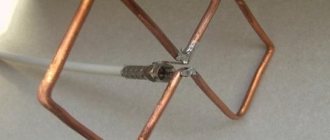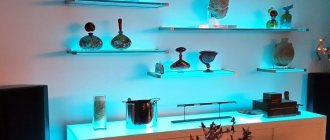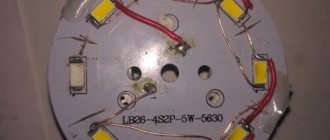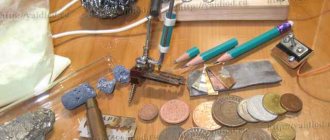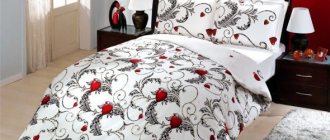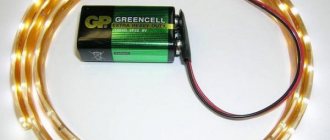When dreams of a new design begin to come true, you need to decide how justified the use of LED lighting in the apartment is, whether the savings in the process really cover the increased initial costs. You can learn about the benefits of various application options, operational reliability and other interesting nuances from this article.
Features of LED lighting
The variety of layouts of semiconductor devices (LED lamps) depends on the dimensions, purpose of the rooms, interior, ceiling height, and taste of the owners.
Where are they used?
LEDs are a universal designer tool that transforms familiar home environments into a reality fairy tale.
Main purposes of use in the apartment:
- general lighting;
- night lamps;
- room zoning;
- lighting of interior elements.
For general lighting of the room, spot lamps with an even light of a neutral tonality are suitable.
Illumination of baseboards and steps serves as emergency lighting in the evening twilight.
Beams of light from spotlights highlight areas for work (desk), relaxation (sofas, armchairs), dining area, kitchen countertops.
By combining lighting, get a unique room design. Illumination of fragments of walls, floors, ceilings, bookshelf, figurines creates an individual atmosphere.
Advantages
After high-quality installation, the lighting will not require any maintenance other than dusting for the next decade.
The popularity of LEDs is justified by many advantages over traditional light sources:
- High-quality LEDs last for decades.
- Fire safety - heat generation is 7-8 times less than that of incandescent lamps.
- No ultraviolet radiation.
- There are no mercury vapors.
- A wide color spectrum allows you to create original designs.
- The combination of different lamps visually changes the volume of the room.
- Light intensity is smoothly adjustable.
- Automatically turns on when equipped with motion sensors.
- It operates on direct current, so there are no harmful pulsations of the light flux, like with LN.
- 12 volt voltage is safe in high humidity conditions in bathrooms, greenhouses, or near a sink or washbasin.
- Simple installation can be done with your own hands.
- The flexibility of the tapes allows you to emphasize any curved surfaces of the interior.
- The small thickness of diode panels expands the design possibilities of rooms with low ceilings.
- Withstand power surges from 80 to 230 volts.
- Energy consumption is 8 times less than other types of lighting. This allows you to significantly save on electricity bills.
Flaws
A serial connection to a power source is often used. If one LED fails, the rest do not work either. This is typical for linear and tape products. Spotlights must be connected using an independent parallel circuit.
The cost of LEDs is quite high. High-quality products cost about 2,000 rubles. You can find options for 100 rubles, but they will be made in China. It's possible they won't be bad. Mass production greatly reduces the cost of even traditionally expensive products.
To obtain soft light you need filters. For example, a suspended ceiling, which is also not cheap. Then lamps or strips are mounted in the cornices. Soft light pours down through the film, reflected from the ceiling.
The need for special filters arises when the lamps are chosen incorrectly. To avoid mistakes, pay attention to the light temperature indicated on the packaging.
At 2700 K (kelvin) we get the usual warm glow, like the Sun or a regular incandescent lamp. This is the optimal choice and does not require any additional filters.
At a light temperature of 4200 K we get white light, which is used by professional photographers in the studio. Prolonged exposure to harsh rays can cause your eyes to become tired. This stream of light should be passed through a filter to get soft shades.
The bluish tint at 6400 K is rarely used in the home environment.
Prolonged exposure to hard rays harms the eyes, especially children's eyes.
How long will LEDs last?
Service life from 25,000 to 100,000 hours of continuous operation. On average, the lighting works 6 hours per day, so the lamps will have to be changed once every 10 years. And the highest quality ones can last up to 40 years, if you believe the promises and the meager energy consumption makes LEDs the leader among lighting devices. The high starting cost pays off in a maximum of two years, even with stable electricity tariffs.
If we take into account that the price of electricity only increases over time, then the initial costs of LED lamps turn into a profitable investment. Moreover, manufacturers provide a guarantee for a period of 1 to 5 years.
general information
LEDs appeared in the middle of the last century. But due to the high cost they were not in demand. In the 90s, manufacturers expanded the range of colors and lowered the price - this attracted a mass buyer.
The scope of application of semiconductor diodes is varied: gadgets, liquid crystal screens, lamps and LED strips for illuminating the ceiling of a room, signs and traffic lights - and this is not the limit. They replace conventional light sources even in street lighting. Attempts are being made to switch areas to LED lighting. We are not talking about cities yet, but this is possible in the future.
Classification
Depending on the parameters of the apartment (room area, ceiling height, size of window and door openings), different modifications of lamps are used.
Areas of application
The ways to use LEDs in an apartment are numerous and are constantly being expanded.
Application options in the apartment:
- built-in;
- ceiling;
- wall;
- hanging;
- console;
- desktop
Countless gradations of halftones combined with creative design create true art.
The miniature dimensions of LEDs allow illumination:
- shelves in the closet;
- kitchen countertops;
- arched openings;
- skirting boards;
- steps;
- door handles;
- mirrors
Types of LEDs used
Only a few technologies have been used in mass production.
There are 3 types of diodes for lighting:
- SMD is a common type for household lighting fixtures with a long service life.
- COB is distinguished by its reliability and adjustable light distribution. Several crystals are mounted on one board. Each is individually controlled by a controller. The maximum reached is 128 LEDs working together.
- Filament LEDs are the latest generation of LED lamps. Manufactured with power from 10 to 100 watts. They have the most efficient light output.
The method of fixation of LEDs varies depending on the design. Linear and tape are attached with double-sided tape, glue, and staples.
The lamp base is adapted to the operating conditions:
- threaded - similar to the usual LN, has a different diameter;
- pin - used in ceiling lamps;
- pin - for work in conditions of high vibration.
What is Ice backlight
LED lighting is created using LED light sources. These include lamps, strips, panels and other lighting devices. LED bulbs are used to create general lighting. Multi-level ceilings and design elements are illuminated using LED strips.
Advantages and disadvantages
Lighting using LED products is actively used in the modern world. This is explained by the advantages that LEDs provide:
- stylish appearance of the product;
- high efficiency;
- efficiency;
- long service life;
- low labor intensity during installation;
- environmental friendliness;
- safety;
- functionality;
- compactness, flexibility;
- color variety.
There is only one drawback - LED sources are more expensive than their classic counterparts. But this price pays off due to long operation and low power consumption.
Application area
LED lighting is used everywhere - in apartments, in architecture, on the streets, in advertising banners. LEDs are also used in the backlighting of televisions, smartphones and tablets.
Types of LED light sources
Currently, 5 types are used for lighting and apartment design.
Spot
They are installed in furniture niches, suspended ceilings, and illuminate work surfaces.
Recessed ceiling
LED panels of rectangular or round shape are conveniently built into suspended ceilings due to their small thickness (up to 1.5 cm).
Linear
They have a length of up to 60 cm. They are used for general and area lighting.
Lamps
A smooth change in the intensity of glow and color opens up new possibilities for using familiar chandeliers, sconces and shades. Lamps have different shapes, sizes, and types of bases.
Ribbons
In addition to lighting an apartment with LED strip, this is an ideal option for illuminating any curved surfaces. The tape is very flexible and will repeat any turns on the surface of furniture, ceilings, walls.
What is needed to connect the tape to the facade of the house
LED strip can be used not only in internal, but also in external lighting.
For street lighting you need to know how to choose the right strip and power supply. They must have a high level of moisture and dust resistance, and be in a sealed housing that can withstand any weather. Installation on a building can be done in two ways:
- Making holes in the plastic wall with which the tape will be fixed.
- In brick buildings, installation is more difficult. The tape is installed at the corners of the building and stretched to the maximum possible condition. After this, holes are made in the wall into which the tape is fixed using special fasteners.
Installation work must be carried out carefully so as not to damage the LED strip and components.
LED lamp selection criteria
Lamps for residential premises should have a “light temperature” in the range of 2700-3200 K. Then the emitted light will be harmless and soft on the eyes.
Products made in China are considered low quality. In this case, you should focus on cost. Good things are rarely cheap.
With the same electrical power, LEDs and incandescent lamps have an average 8-fold difference in brightness. Instead of a 75-watt “Ilyich light bulb,” a 10-watt LED lamp will do.
How to calculate the required illumination and standards
For preliminary calculations, you can take the construction GOST standards as a basis.
Illumination is measured in lux (Lx) per 1 square meter of room area:
- living room, bedroom - 150;
- children's - 200;
- office - 300;
- dressing room - 75;
- hallway - 50.
Now it is enough to multiply the area of the room by the standard illumination. The resulting figure is the required minimum. For example, the area of a children's room is 20 m², then you need 4000 Lx. The packaging of the LED lamp indicates the amount of luminous flux, measured in lumens (Lm). It is usually accepted that 1 Lm = 1 Lx. The final figure can be greatly adjusted by design features and personal preferences of the owners living in the apartment.
Light control
Multi-colored ribbons are controlled by a controller. According to a given program, it changes the brightness of the glow, color, order and sequence of activation. The brightness of the light and the inclusion of different groups of lamps can be controlled by remote control.
LED lamps can be equipped with motion sensors that respond to human presence.
Wi-Fi bridge
Photo of the bridge
In principle, a W-iFi bridge for a lighting system is not necessary, but is a nice addition. With it you can control the light from your phone/tablet/computer/server, etc. Wi-Fi bridge from the same manufacturer as the controller with remote control. Again, no complaints about the quality. A small minus is that the kit does not include a power supply, but there is a cord and any phone charger will be suitable for power. Another unpleasant surprise was the software provided, it is working, universal, but it seemed to me absolutely inconvenient to use. I had to spend a couple of evenings and write my bike play.google.com/store/apps/details?id=com.uncle.george.homelight
How to make it yourself
The technology for installing LED lighting is extremely simple. A standard set of tools and minimal skills will be required.
Selecting a power supply for the tape
LED strips operate on a direct current of 12 volts. They cannot be connected to a regular 220V network. To select a power supply, let’s assume that the total length of the tape is 15 meters.
The specific power consumption is written on the packaging. For example, 5 W/m (watts per meter). Then the power consumption will be 75 watts.
We must add to this a safety factor of 20%. In total, the power supply should provide at least 90 watts of output.
Calculation of the number of lamps
As above, determine the light level. For example, for a bedroom - 150 lux/sq.m. If its area is 25 square meters, then the total luminous flux should be at least 3750 Lm.
If lighting is provided by a five-arm chandelier, then each lamp must be at least 750 lm. This characteristic is indicated on the packaging.
Layout diagram
When connecting LED lamps to the power supply, keep in mind that its output is constant current. Therefore, the optimal scheme is a parallel connection.
It is advisable to divide the tape into short sections of up to 5 meters. They also need to be connected in parallel. If the length is longer, then due to the increased resistance of the electrical circuit, the last LEDs will be less bright than those closest to the power supply.
Fastening
When starting installation, make sure that the LED lamps and strips are in good working order by simply connecting the power.
For even illumination of the stretch ceiling, the lamps are mounted hidden inside the eaves. In the case of a designer pattern, for example, a starry sky, tapes are glued and connected to the ceiling. Then the film is stretched.
LED panels are mounted simultaneously with a suspended ceiling or on brackets (consoles).
Connecting lamps
Now connect the lighting system to the power supply and controller. For wiring, stranded copper wire with a cross section of 1.5 mm² is suitable.
We crimp the bare ends of the wires with contact tips. We connect, strictly observing the polarity.
Installation nuances
It is important to note that the installation procedure for RGB and SMD tapes is different. Connecting a multi-color product is more complicated - you need to connect the power supply to the controller, then the tape itself. When connecting multi-color tape, polarity must be observed. If you confuse plus and minus, the LEDs will burn out and you will have to change the light source.
The tape should only be cut in the marked places. When cutting, it is important not to damage the conductive tracks and LEDs. The connection must be made by soldering or using special connectors selected for a specific type of tape.
When installing the product on the ceiling, it is important to make sure that it is not visible from below. To do this, use cornices or make special projections from plasterboard. It is recommended to use LEDs on a matte ceiling. They are reflected from the glossy surface as if in a mirror, and even minor dirt will be noticeable.
LED lighting is a profitable and stylish way to illuminate interior spaces, advertising posters, building facades, and monuments. LEDs are actively used due to their advantages - they save energy, provide high efficiency and work for a long time if operating conditions are met. Using an LED strip, you can create unique lighting, highlight decorative elements and create room zoning. Installing the LED strip is not difficult, but you need to have skills in working with a soldering iron.

